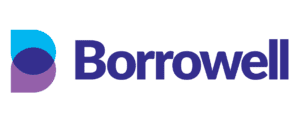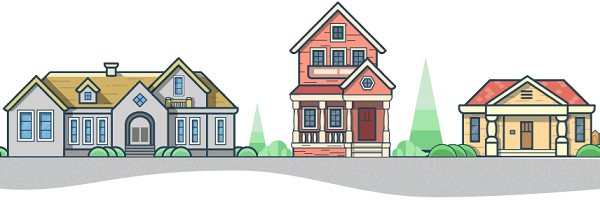
Credit scores are crucial for financial health, and lenders use them to determine your creditworthiness. Your score is visually displayed on a credit score chart. A good credit score can lead to lower interest rates, better loan terms, and easier access to credit. On the other hand, a poor credit score can make it difficult to obtain credit or result in higher interest rates and fees.
A chart can visually represent the range into which your credit score falls. Knowing how your credit score is calculated and where you stand in the range will enable you to make informed decisions. In Canada, five factors calculate your credit score:
- Payment History
- Credit Utilization
- Length of Credit History
- Types of Credit Used
- Recent Credit Inquiries
Each factor has a different weight, meaning different levels of importance. A factor with a higher weighting will have a more significant effect on calculating your credit score. Continue reading for a comprehensive understanding of the credit score chart and the factors influencing your score.

What is a Credit Score Chart?
A credit score chart visually represents the credit score ranges and what they indicate about your creditworthiness. In Canada, credit scores range from 300 to 900, with a higher score indicating better creditworthiness. The credit score chart has several categories, each displaying a different level of creditworthiness. The categories are as follows:
- 300-599: Poor
- 600-649: Fair
- 650-699: Good
- 700-749: Very good
- 750-900: Excellent
It's important to note that different lenders and financial institutions may have their own credit score ranges and requirements. For example, some lenders may consider a score of 650 good, while others may require a score of 700 or higher. However, lenders will use the following guidelines in general.
Poor
A credit score of 300-599 is considered poor credit. This means you may have a history of missed or late payments, defaulted loans, or high credit utilization. With a poor credit score, getting approved for credit or loans can be challenging. You may only be eligible for high-interest rates or secured credit cards.
Fair
A credit score of 600-649 is considered fair credit. You may have a few missed payments or high credit utilization, but your credit history is generally good. With fair credit, you may be able to get approved for credit or loans, but you may only be eligible for higher interest rates or less favourable terms. For example, you may be restricted to larger down payments to get a mortgage loan.
Good
A credit score of 650-699 is considered good credit. This means you have a solid credit history, few missed payments, and low credit utilization. With good credit, you may get approved for credit or loans with favourable terms and interest rates.
Very Good
A credit score of 700-749 is considered very good credit. This means you have an excellent credit history, no missed or late payments, and low credit utilization. With very good credit, you can expect to get approved for credit or loans with excellent terms and low-interest rates.
Excellent
A credit score of 750-900 is considered excellent credit. This means you have a perfect credit history with no missed or late payments, low credit utilization, and lengthy credit history. With excellent credit, you can expect to get approved for credit or loans with the best terms and lowest interest rates.
Five Factors that Affect Your Credit Score

| Factor | Weight | Summary |
|---|---|---|
| Payment History | 35% | A missed payment will severely drop your score. Setting up auto payments is a great way to never forget. |
| Credit Utilization | 30% | How much of your available credit you use. This should remain below 30% of your balance. |
| Length of Credit History | 15% | A more extended credit history indicates responsible borrowing and credit management, positively affecting your score. |
| Types of Credit | 10% | Having a mix of credit types can indicate that you can handle different types of credit, positively impacting your score. |
| Recent Credit Inquiries | 10% | Too many recent inquiries can negatively affect your score, signalling you're in a bad financial situation. |
1. Payment History (35%)
Your payment history is the most significant factor that affects your credit score. It weighs around 35%, meaning late or missed payments can significantly drop your score. To maintain a high score, always ensure you make payments on time.
A common way to ensure you make payments on time is by setting up auto payments. This involves contacting your lending institution and completing a pre-authorized deposit (PAD) form. You can typically do this with your credit cards. Here you can decide to make the minimum or full payment automatically.
The lender will then take the amount from your bank account, which ensures you never miss a payment. However, ensure you have enough funds to cover the amount; otherwise, you will receive a non-sufficient funds (NSF) fee. If this happens, your bank and lender will charge you separate NSF fees.
2. Credit Utilization (30%)
Another critical factor that affects your credit score is your credit utilization. This factor weighs around 30%, making it the second most impactful. Credit utilization is how much of your available credit you are using. Always try to keep your credit utilization below 30%.
For example, if you have a $1,000 limit on a credit card, it's best to keep your balance below $300. Some credit card companies let you set up custom alerts. This will inform you when your balance exceeds 30%, and you should pay your card early. For example, you'll receive a text message or notification when this happens.
3. Length of Credit History (15%)
The length of your credit history makes up about 15% of your credit score. A more extended credit history can indicate that you're a responsible borrower who can manage credit well, which can positively impact your credit score. This factor analyzes the average age of your credit accounts, including your oldest and youngest account.
Keeping your oldest credit card open is always recommended to keep extended credit history. By closing this account, your average credit age will decrease, and so will your credit score. If your card has an annual fee, you can complete a product switch to a free version. That way, you won't have to pay a hefty price to maintain your credit score.
4. Types of Credit (10%)
Otherwise known as your credit mix, your portfolio of loans has a 10% effect on your credit score. Although minor, combining credit types can positively impact your score. For example, you may have an auto loan, mortgage, student loan, and credit card.
Having various types of loans can indicate responsibility. As a result, lenders may deem you more creditworthy. However, since it's a small percentage of your credit score, opening new accounts to increase it is often not worthwhile.
5. Recent Credit Inquiries (10%)
Finally, credit inquiries account for 10% of your credit score. An inquiry happens when a lender reviews your credit report for a potential loan. Too many recent inquiries will drop your credit score because it signals you're in a bad financial situation.
There are two types of inquiries to know about. First is a soft inquiry which doesn't affect your credit score. This happens when you check your credit score or a lender pre-qualifies you for a loan.
On the other hand, a hard inquiry lowers your credit score for up to two years. A hard inquiry happens every time you apply for a new loan. This can include a mortgage, credit card, or auto loan. Limiting the number of hard inquiries you make is essential so you don't damage your credit score. Always double-check if a loan will require a hard inquiry before applying.
How Your Credit Score is Calculated in Canada
As discussed, your credit score is calculated based on five primary factors in Canada. The numerical value ranges from 300 to 900 and indicates how responsible you are with credit compared to other borrowers. Each factor impacts your overall score differently, as shown by their weighting. For example, your payment history accounts for the most significant portion of your credit score at 35%.
Equifax and TransUnion are the two major credit bureaus in Canada. These bureaus collect data to analyze the five factors mentioned above. The data is from various sources, such as banks, lenders, and credit card companies. However, each bureau has a secret approach to calculating your score. While we can estimate their methods, the exact weighting and data points are uncertain.
Where to See Your Credit Score Chart
Equifax and TransUnion are the primary credit score agencies in Canada. You're entitled to at least one free credit report per year from each bureau. However, multiple additional services provide access to your credit scores and reports. This includes online platforms such as Credit Karma and Borrowell.
- Borrowell: This online platform shows your Equifax credit score and reports for free. The service also offers loan options from various lenders.
- ClearScore: This digital platform originally from the UK enables Canadians to monitor their credit scores and credit reports from TransUnion for free, helping them to understand their financial health and make informed decisions about their credit.
- Credit Karma: This free online service provides access to your credit score from Equifax and TransUnion. The service also includes access to your credit report, as well as personalized tips on how to improve your score.
- Equifax: This is one of the largest credit bureaus in Canada. You can receive free reports or pay extra for more features.
- TransUnion: This is the other major credit bureau in Canada. You're entitled to one free copy of your credit report annually, but more detailed options will have a fee.
Improving Your Credit Score
Once you know your credit score, you can take a few steps to improve it. The most critical factor in improving your credit score is timely payments. The second most crucial step is maintaining a balance below 30% of your limit.
As mentioned, you can set notifications as a reminder to pre-pay if your ratio exceeds 30%. You can also establish auto payments to ensure you never miss a payment. Keeping your oldest credit card open will also positively impact your score.
The Bottom Line
Your credit score is one of the most important financial numbers you should track. It impacts your ability to get approved for loans and can signify whether you're a responsible borrower. A credit score chart will visually display which range you're in.
In addition, five components determine your credit score. However, the most impactful are your payment history and credit utilization. To get a high credit score, never miss a payment, and keep a low balance.
Frequently Asked Questions About Credit Score Charts
The pie chart of a credit score shows the five components that make up a person's credit score, including payment history, credit utilization, length of credit history, new credits, and types of credits. The size of each piece represents the relative importance of the respective factor in determining your credit score.
A credit score range chart shows the different ranges of a person's credit score, such as bad, poor, fair, good, and excellent. The scale ranges from 300 to 900, with a higher number indicating better credit. Each range represents a level of risk for lenders when considering someone for a loan or line of credit. However, each lender has different ranges.
Equifax and Transunion are the primary companies that calculate your credit score in Canada. Both companies have proprietary algorithms that calculate a score from 300 to 900. Their algorithms consider several factors, such as payment history, credit utilization, length of credit history, new credit applications, and types of credit in use. The exact weighting of each factor is unknown but can be estimated.





















About The Author: Daniel Schoester
Daniel grew up in Toronto, receiving an Honours Bachelor of Business Administration from Wilfrid Laurier University. Here, Daniel became the sailing team's MVP and travelled to Israel for an exchange trip.
Although he studied finance, Daniel didn't want to be constrained to the office culture of standard financial careers. Upon graduating, Daniel became a financial content writer and immediately booked a one-way ticket to Lisbon, Portugal.
He then spent the next two years working remotely from places such as Istanbul, Sicily, Cairo, and Rio. Today, Daniel is now a resident of Portugal and is based out of Lisbon.
More posts by Daniel Schoester